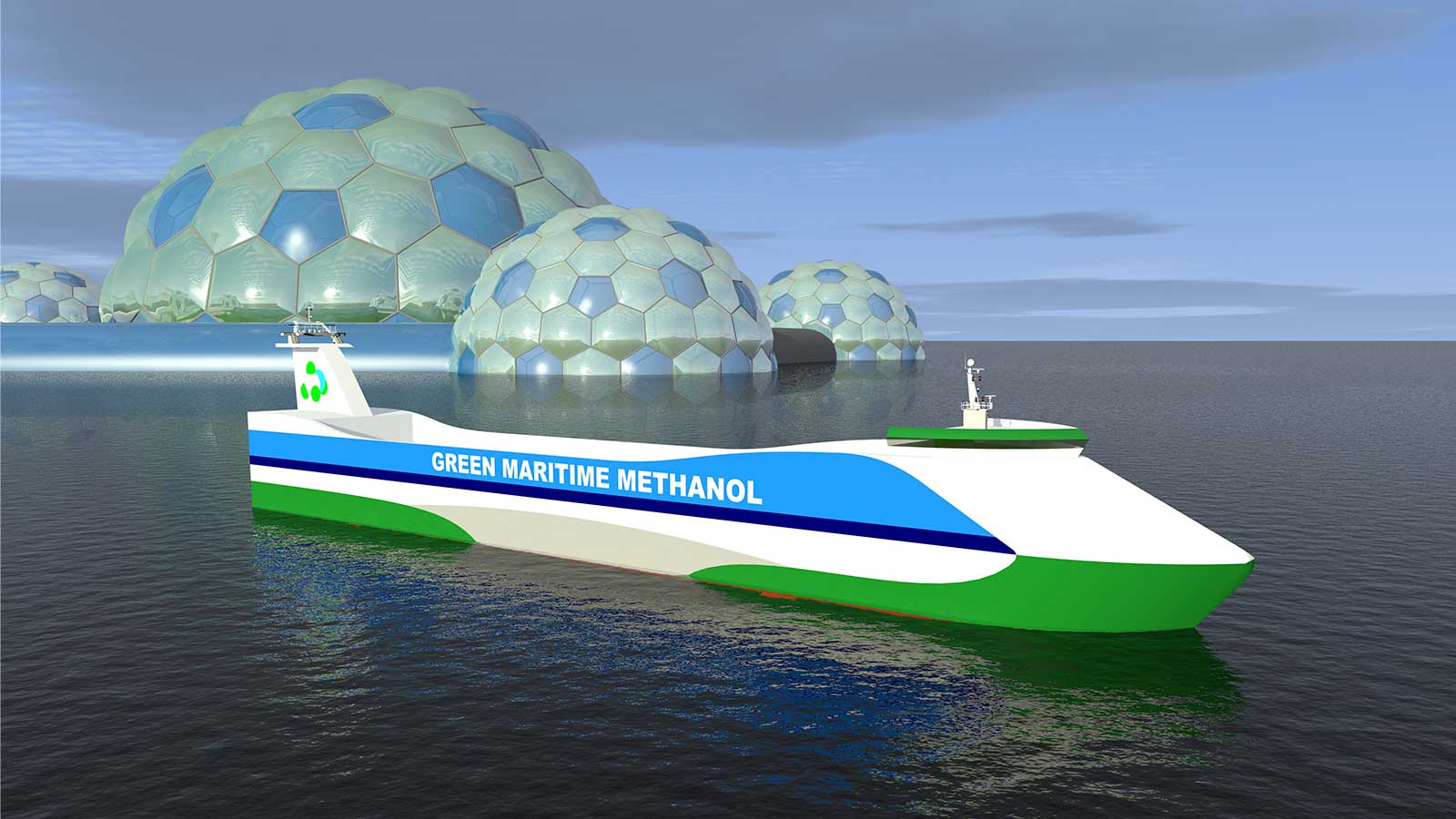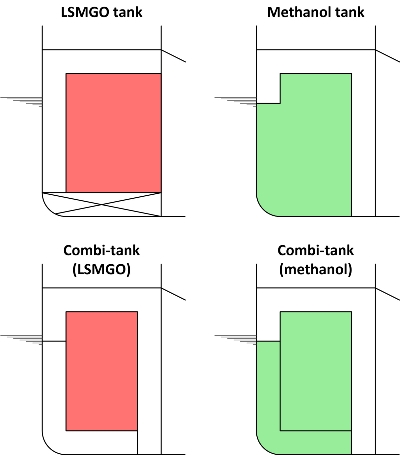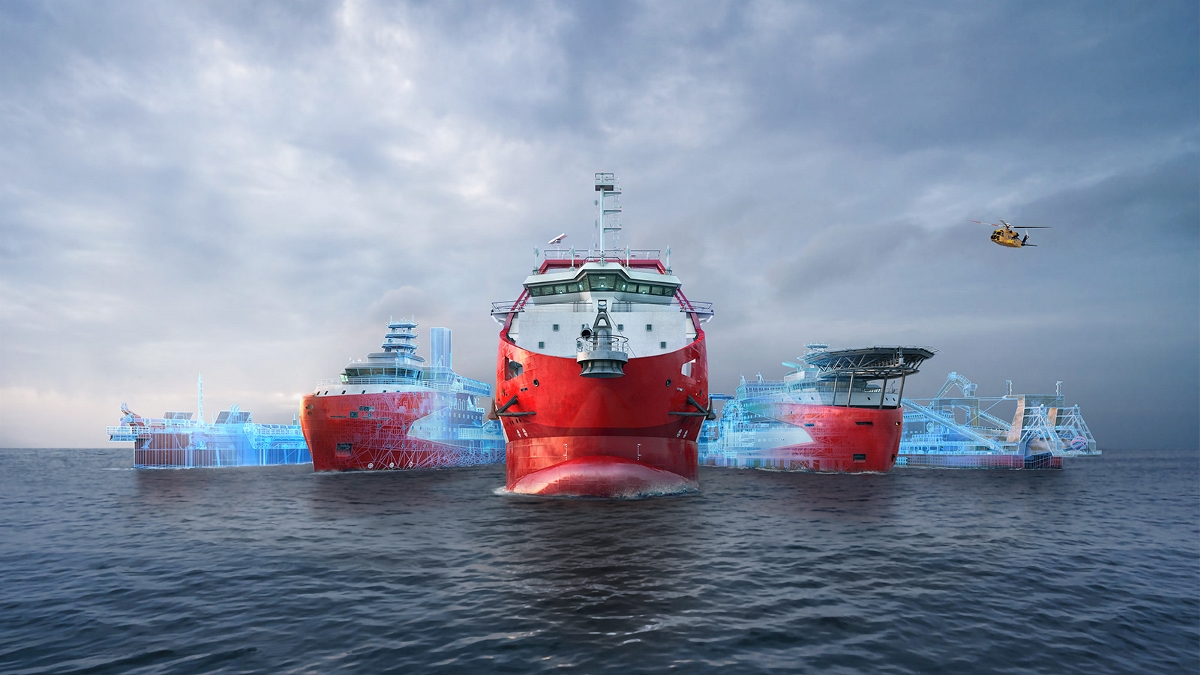Is methanol a realistic alternative fuel for work vessels?

In previous blogs, we discussed developments for the transition to zero emission vessels such as clean fuels, innovative drive systems and novel prime mover technologies. In this blog, I would like to look at one of these potential fuels – methanol. Royal IHC is exploring the use of this fuel in its work vessels and participates in sector-wide cooperation projects in this field.
Green maritime methanol project
One such programme is the Green Maritime Methanol (GMM) project. It ran from January 2019 to December 2020 and was supported by TKI Maritime and The Netherlands Ministry of Economic Affairs.
Thirty partners investigated the application of methanol as an energy carrier for shipping by studying technical and operational effects, the economic and environmental viability, and how these impact different shipping applications. With its experience and expertise as a shipyard, Royal IHC participated in the dredger design study.
Why methanol?
Methanol (or to give it its chemical formula: CH3OH), is expected to be one of the fuels in the renewable fuel mix for the transportation sector along with several other energy carriers such as hydrogen, methane and ammonia. It is liquid at room temperature and ambient pressure, and has a volumetric energy density similar to that of liquefied natural gas (LNG).
These properties make methanol a feasible option as an alternative maritime fuel, because the handling and storage of methanol is much simpler than cryogenic fuels such as LNG and liquefied hydrogen.
Safety
However, specific precautions must be taken when handling methanol. It is a light, volatile, colourless and flammable liquid with a distinctive odour. Although, it is non-toxic to aquatic life, it does have a low acute toxicity. This means that it is toxic for humans if swallowed, inhaled or it comes into contact with skin. IMO is developing design rules for methanol as part of the IGF code.
Green methanol production
The current worldwide methanol production equates to approximately 18% of the total energy consumed by the maritime sector and it is primarily used as a raw material in the (petro)chemical industry. However, about 99% of methanol is currently made by the oxidation of methane or the gasification of coal. This means that the tank-to-propeller CO2 emissions of so-called ‘grey methanol’ are comparable to those of other fossil fuels.
Green methanol, such as bio-methanol and e-methanol, significantly reduce CO2 emissions by about 85%, however production volumes are still limited. In the future, green methanol may be produced from a wide variety of feed stocks and through different pathways. This and methanol’s worldwide availability and distribution network make it a promising alternative for conventional fuels.
Prime mover options
Maritime four-stroke engines capable of operating cleanly and efficiently on methanol are still in development. Several tests with methanol combustion were performed in the GMM project. Methanol can be combusted in Otto combustion engines with either a (diesel) pilot fuel or spark to ignite the air-fuel mixture. It can also be used directly in high-temperature fuel cells, such as solid oxide fuel cells and molten carbonate fuel cells.
Some low-temperature fuel cells – such as direct methanol fuel cells and high-temperature polymer electrolyte membrane fuel cells with proper pre-reforming can also operate on methanol. The STENA GERMANICA is currently the only methanol-fuelled vessel with a customised gas-diesel engine. Off-the-shelf maritime four-stroke engines are currently not available.
Example of a work vessel retrofit
A study was performed to retrofit a trailing suction hopper dredger (TSHD) to methanol. The vessel must maintain its full functionality and be able to operate entirely on low sulphur marine gasoil (LSMGO) when methanol is not available. The gas-diesel engine is selected as the vessel’s prime mover.
This engine injects a LSMGO pilot in the cylinder and then the methanol under a high pressure through the pilot flame to ignite it. This results in a diesel-like engine response, but also in nitrogen oxide (NOX) emissions above the IMO NOX Tier III limit, about 40-60% of full LSMGO operation.
To reduce NOX emissions to the IMO NOX Tier III limit, a selective catalytic reduction (SCR) system is required. Alternatively, the methanol can be blended with water to reduce the NOX emissions, but this may result in cavitation in the fuel injector and a shorter injector lifetime. Methanol combustion results in no sulphur oxide (SOX) emissions and almost no particulate matter (PM) emissions.
The integration of methanol reduces the vessel autonomy from a month for the current vessel to about two weeks when operating on methanol, and about three weeks when operating on LSMGO. The reduction of the vessel autonomy on LSMGO is an effect of the rearrangement of the cofferdams in the fuel tanks. Methanol requires a different placement of cofferdams than diesel-like fuels, and therefore designing a fuel tank capable of containing both fuels reduces capacity.
A closer look
Figure 1 shows the cross-section of the fuel tanks for LSMGO, methanol and a combined solution for either LSMGO or methanol depending on the situation. The traditional LSMGO tank has a double bottom to prevent leakage, as well as a cofferdam on the side of the vessel. The methanol tank does not require a cofferdam to the water as it is non-toxic to aquatic life, but above the waterline a cofferdam is required.
Methanol can induce corrosion in carbon steel depending on the conditions (presence of water). This should be considered during the design of the methanol storage and bunkering system, for example, by applying a zinc-based coating in the fuel tanks.
To prevent the formation of an explosive mixture in the fuel tank, nitrogen blanketing may be applied. All methanol containing piping running through areas in which humans are able to enter – or in which machinery is placed – should be double-walled, according to the IMO IGF code.

Figure 1: cross-section of LSMGO, methanol and a combined LSMGO and methanol tank
Our role
The active participation of Royal IHC in the GMM project is a strong example of how we are positively contributing our know-how and stimulating new developments in the European maritime sector. This helps us to provide the most efficient and sustainable solutions for our customers. If you are interested in collaborating with us in this field, we look forward to hearing from you.
Written by
Benny Mestemaker
Senior research engineer New Fuels & Drive systems

Stay up to date with the latest innovations
Wondering what we at Royal IHC are up to? Sign up for our newsletter where we highlight our latest innovations, new solutions and delve into market challenges.